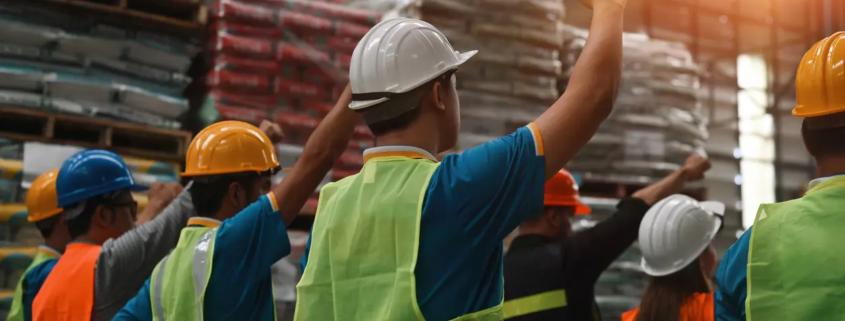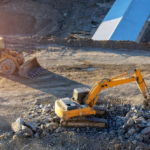Trump’s Tariff War Has Santa Barbara Contractors on Alert
By Christina McDermott | Originally posted on independent.com
Will it soon cost more to build? In short: We don’t know. But market instability, current tariffs, and a potential for more to come across all trade sectors and for all of the U.S.’s trading partners have put contractors on alert. Increased construction costs would make it more expensive to build structures, such as housing, and would also add to the cost of public projects paid for, in part, with taxpayer dollars.
“It’s a major concern for us, and we’re watching it really closely,” said Ashleigh Sizoo, the City of Santa Barbara’s acting city engineer. Santa Barbara’s Public Works department works on projects, such as maintaining bridges, replacing water mains, and working on roadway projects.
Erwin Villegas is the president of Frank Schipper Construction Company, a Santa Barbara–based company that has worked on projects like the Sanctuary Center’s supportive housing project and the Sansum Diabetes Research Institute’s building renovation and remodel. He said that the company hasn’t seen increases in their construction costs yet, but their suppliers have put them on notice for potentially higher prices.
Rising construction costs are nothing new. Since 2020, the cost of construction materials has climbed by more than 40 percent and stayed high, according to Associated Builders and Contractors, a national trade association that releases reports based on data from the Bureau of Labor Statistics.
Tariffs could add to those already higher prices. A tariff is a tax. It’s put on goods imported from another country, and usually paid by whoever’s doing the importing, or buying. That increased cost usually results in more expensive goods for customers.
Trump imposed tariffs during his first term, which resulted in a brief boost in jobs in some metal industries, like in steel manufacturing, but hurt workers in factories with foreign materials and caused increased manufacturing costs, according to the Federal Reserve.
The tariffs introduced by the second Trump administration, especially the reciprocal tariffs announced on April 2 and then paused, would reach farther — to every country the U.S. trades with across all trade sectors. The administration does include exceptions for materials used in construction, such as lumber, steel, and aluminum (which already face a 25 percent tariff), and electronic goods like semiconductors. But that does not account for every material required for building.
The general uncertainty around tariffs has actually increased costs already — since January, the Associated Builders and Contractors said, construction input prices have “risen at rapid pace” with 9.7 percent annualized rate increase for the first quarter of 2025.
Tariffs, too, aren’t the only thing that may impact the cost of construction goods. Villegas said that even if the threat of tariffs increasing taxes subsides, the company may still see the price of materials increase or face shortages, due to the construction now needed in the L.A. area after the January fires.
Whether tariffs will materialize is not clear. Last month, after receiving messages from Walmart, Target, and Home Depot’s CEOs, and slumped markets, the president said he has made “200 deals on tariffs” and spoken with Chinese President Xi Jinping, and that trade talks with China were upcoming. China has repeatedly refuted claims that the two countries are negotiating.



